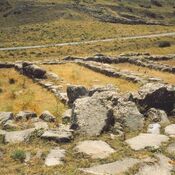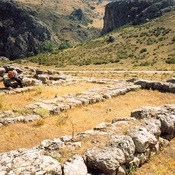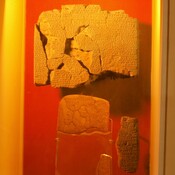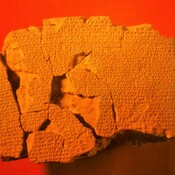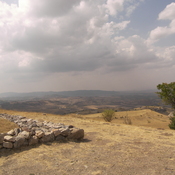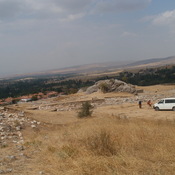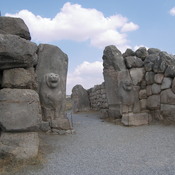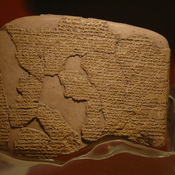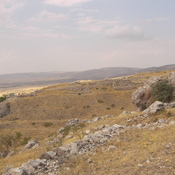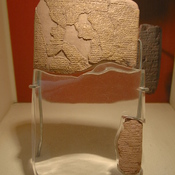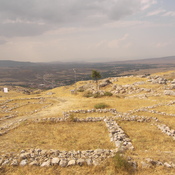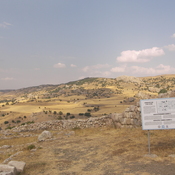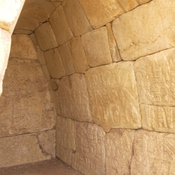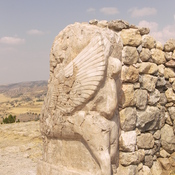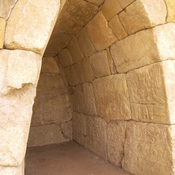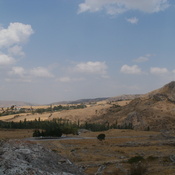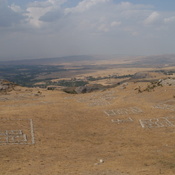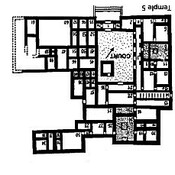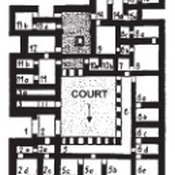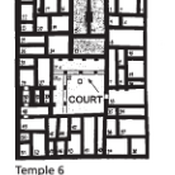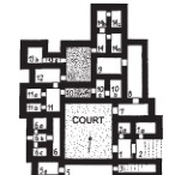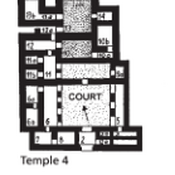Er zijn nog geen Nederlandstalige annotaties. Hier volgen annotaties in het Engels.
Sanctuary of Hattusa, the capital city of the Hittite Empire. Yazılıkaya means inscribed rock. It was in use at least since late 16th century BC till the late 13th century BC. It was build mainly by the king Tudhaliya IV (ca. 1237- 1209), the younger son of Hattusili III. and Puduhepa, one of the most influential women known from tha Ancient Niear East. The main part of this sanctuary form roofless chambers - Large Gallery [Chamber A] and Small Gallery [Chamber B]. In front of them was erected a large building complex - typical Hittities temple.
Chamber B, with its own entrance, may have served as the mausoleum of King Tudḫaliya IV (reigned c. 1237–1209 BC), whose image in the embrace of his patron deity Šarruma is shown on its walls.
- http://www.hattuscha.de/English/yazilikaya.htmt
- https://sacredsites.com/middle_east/turkey/yazilikaya.html
- Gary Beckman, Constructing Sacred Space in Hittite Anatolia, in: Heaven on Earth: Temples, Ritual, and Cosmic Symbolism in the Ancient World eds.Deena Ragavan, OIS 9, Chicago: The Oriental Institute, 2013, pp. 153-173
- James G. Macqueen, The Hittites: And Their Contemporaries in Asia Minor, rev. eds., London, Thames and Hudson 1986, pp. 123-132
Sanctuary of Hattusa, the capital city of the Hittite Empire. Yazılıkaya means inscribed rock. It was in use at least since late 16th century BC till the late 13th century BC. It was build mainly by the king Tudhaliya IV (ca. 1237- 1209), the younger son of Hattusili III. and Puduhepa, one of the most influential women known from tha Ancient Niear East. The main part of this sanctuary form roofless chambers - Large Gallery [Chamber A] and Small Gallery [Chamber B]. In front of them was erected a large building complex - typical Hittities temple.
Chamber B, with its own entrance, may have served as the mausoleum of King Tudḫaliya IV (reigned c. 1237–1209 BC), whose image in the embrace of his patron deity Šarruma is shown on its walls.
- http://www.hattuscha.de/English/yazilikaya.htmt
- https://sacredsites.com/middle_east/turkey/yazilikaya.html
- Gary Beckman, Constructing Sacred Space in Hittite Anatolia, in: Heaven on Earth: Temples, Ritual, and Cosmic Symbolism in the Ancient World eds.Deena Ragavan, OIS 9, Chicago: The Oriental Institute, 2013, pp. 153-173
- James G. Macqueen, The Hittites: And Their Contemporaries in Asia Minor, rev. eds., London, Thames and Hudson 1986, pp. 123-132





















